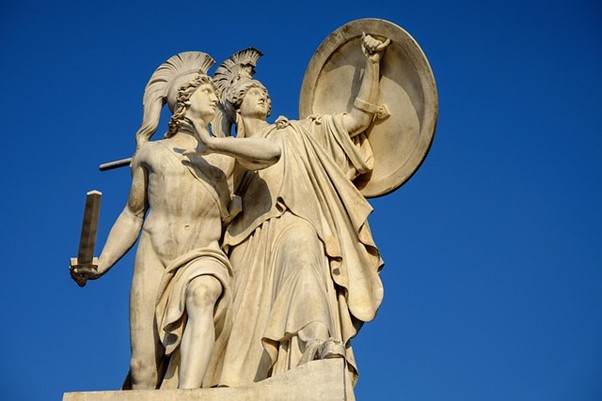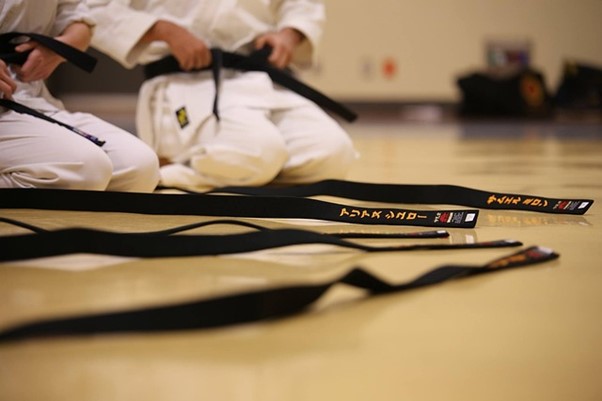Mixed Martial Arts, or as it is more commonly known, MMA, is perhaps one of the newer fighting sport styles that has found its way into the spotlight in recent years, thanks to the fresh approach that it brings to the table. With traditional boxing, for instance, you know you can expect to see the competitors throwing punches, with anything even remotely takedown style or kicks being completely off limits. However, the fighting styles in MMA are what makes it so unique as a sport!
With a blend of not only combat but also self-defense, mixed martial arts allows a lot more flexibility in the styles of combat that can be used. With techniques from karate, judo, and taekwondo, just to name a few, the blend of these is what makes the game so distinctive, keeping both spectators and opponents on their toes – quite literally! Keep reading below to see where this form of combat style emerged from and the history behind it.
Where Did MMA Originate From?
When delving into the history of anything, it is usually well worth looking at its roots to see where it came from, and from there, you can generally track how and why it developed over time.
Similarly, with mixed martial arts, it didn’t simply emerge and stay the same all those years! Not at all. In fact, we’d say the MMA you know and love today is vastly different from what it was like in the beginning.
Much like some of the other impressive martial arts, a part of MMA also emerged from Japan around 1985, founded by Satoru Sayama – also known as the ‘Tiger Mask’ at the time. It only makes sense for someone with such an impressive title to be the founder of MMA!
Another potential origin of MMA could be dated back to the Ancient Greeks, who we know were innovators when it came to sports and games. But the most similar sport they had to MMA was Pankration, where athletes competed against one another through a combination of wrestling and boxing. Considering how old the game is, at the time, the rules weren’t really developed like they are today, and aside from a few basic things like no biting, attacking your opponent’s eyes,and any strikes to the groin, pretty much anything and everything was on the table!
However, it’s worth noting that, as the name suggests, mixed martial arts isn’t just made up of any one single fighting style. Rather it is a combination of more than just a few, taking influence from Brazilian Jiu-Jitsu, Korean Taekwondo, Chinese Karate, American wrestling, and plenty of other combat styles, so it’s difficult to pinpoint any one of those being the sole origin of MMA. To put it simply, there was no single founder of MMA!
When Did The Term ‘MMA’ Come Into Existence?
Whilst we can’t point out the exact origins of MMA because of the culmination of fighting styles and different parts of the world that it comes from, we can still discuss how all of these martial art styles were brought together, and the credit for this goes to UFC 1.
The first MMA fight occurred in November 1993 in Denver, Colorado. Even then, MMA wasn’t the MMA you know and love now! It was simply an umbrella term used for all the different martial art styles to have a chance to highlight and showcase their individual style of fighting for spectators to see.
As UFC began to put on more and more fights, the popularity and demand for MMA increased too, with fighters beginning to borrow techniques from a variety of combat styles, and the rules began to expand and develop accordingly as well, with the term MMA also being used interchangeably with cage fighting.
What Fighting Styles Does MMA Include?
Fast forward to today, and MMA has come a long way from Pankration. Mixed martial arts now encompasses Muay Thai, Brazilian Jiu-Jitsu, Karate, Taekwondo, and kickboxing, expanding the element of boxing and wrestling.
These are at least the primary forms of martial arts that are found in MMA, and each competitor brings to the table a different skill set with different strengths and weaknesses. That is perhaps what makes the game unique – no fighting style is ‘better’ than another. It is more about skill and ability to adapt within the ring as and when needed to try and gain leverage over your opponent, as an MMA fighter born with no legs proved by winning his debut fight.
The Future of MMA?
Thanks to the flexible and growing nature of MMA, we can say with confidence that the sport isn’t entirely done developing just yet. With new combat styles being developed all the time, and martial art styles changing and borrowing from their counterparts, MMA will surely bring something new to the table year after year.





